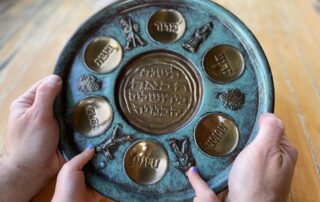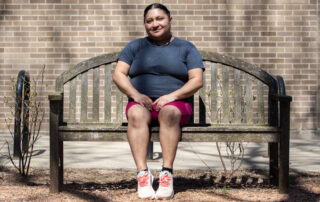Aaron Bird Bear is the Assistant Dean for Student Diversity programs in the School of Education at the University of Wisconsin Madison. He gives tours of the campus, described as the most archaeologically rich campus in the United States. He explains, “We have an established archaeological record of human occupation, and human activity, going back 12,000 years on our lake shore. This culture, kind of, grew, and evolved, and they started making these representational figures on the earth: deer, bear, canines, birds, water spirits, and snakes.”
The UW campus still has 37 extant effigy and conical linear mounds. These effigy mounds are only built in the western Great Lakes. You won’t find them anywhere else on planet earth. Bird Bear will argue that is what makes UW-Madison such a special place, and it’s at the very epicenter of this ancient civilization. Look around campus however and you see monuments that only represent 1848 forward when Wisconsin became a state.
Bird Bear takes issue with one of the most iconic landmarks on Bascom Hill, the statue of Abraham Lincoln and its connection to another landmark – Camp Randall Stadium. That’s where Bird Bear, with paper and pencil, does a rubbing on one of the plaques. It reads, “On the 18th of December 1862, the 25th Regiment came into Camp Randall from a campaign against Indians in Minnesota.”
Bird Bear provides a different perspective on the 16th U.S. President. “Here’s the Indian Wars baked in to our own campus while Lincoln is president. He is committed to the ethnic cleansing of the Ho-Chunk. He’s enacting our federal policy. So, he’s a leader who’s trying to rid the Native American presence from Wisconsin as president. The Ho-Chunk view him as an evil monster. Somebody committed to their destruction.”
His tour does take a positive turn in a place called Dejope, a Ho-Chunk word meaning four lakes. It refers to the area around present day Madison, which includes the University of Wisconsin. Dejope Residence Hall is where the university now looks to showcase Native American history. Integrated into the floor plan, art work and educational areas are the values, symbols and principles of the First Nation people that called this area home.
In this place of higher learning, Bird Bear does recognize the University of Wisconsin is making progress, “I’m seeing concrete stuff happening around us, that show us that there’s tremendous value in the teaching and learning about the full 12,000 years of this place. And I think we can leverage the landscape and the incredible human story this place to advance those goals. I’m committed to giving these tours because they do advance our understanding of one another. This tour is really a story of hope and a story of incredible promise of what relationships can become between First Nations and our University community.”
Editor’s note:
Interested in the map featured in this segment? It’s from Wisconsin First Nations, a collaboration between WPT Education, the UW-Madison School of Education, and the Wisconsin Department of Public Instruction.










